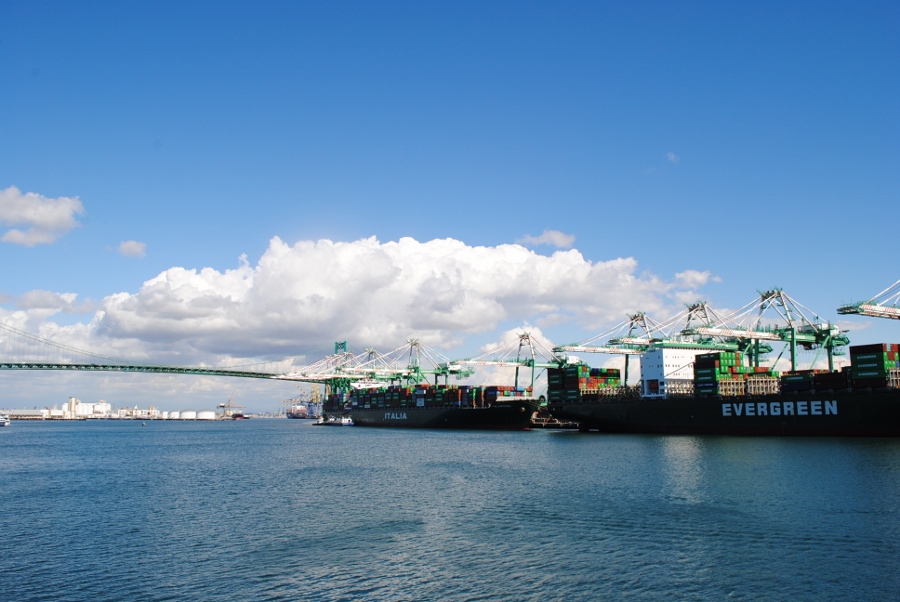
Photo by Asia Morris.
The Port of Long Beach (POLB) announced this morning that they received approval from the Federal Maritime Commission (FMC) Thursday to work more closely with the Port of Los Angeles (POLA) to find new ways to prevent congestion and cargo delays, improve the transportation network and enhance air quality.
“The ports and cities of Long Beach and Los Angeles both succeed when the other succeeds. My thanks to the Federal Maritime Commission and FMC Chairman Mario Cordero for allowing our ports to join forces to address congestion and cargo delays so these issues do not occur again,” said Long Beach Mayor Robert Garcia in a statement. “This port complex is too important for us not to do everything we can to improve it.”
The petition to grant the two ports protection from anti-trust laws which would otherwise prohibit collaboration between them was sent to the FMC in December by harbor commissions overseeing both ports. The FMC’s decision to grant the expanded agreement will allow the ports to pursue projects together in an effort to strengthen the port complex’s ability to handle bottlenecks and move cargo faster and more efficiently.
The ports of Long Beach and Los Angeles make up the United States’ busiest harbor complex, handling nearly 40 percent of the nation’s cargo. The ports are now working through the backlog of containers, thanks to the agreement reached on February 20 by longshore labor and management. Gene Seroka, POLA Executive Director, said during Tuesday’s press conference about the tentative agreement between the PMA and ILWU, that the backlog may take three months to sift through before operations can return to normal.
“With this discussion agreement, the ports of Long Beach and Los Angeles can now focus on working together to improve the speed of cargo flow throughout the supply chain. The ports are in a perfect position – and indeed have an obligation – to bring all industry stakeholders together to identify and implement continuous improvements that deliver world-class performance on a sustainable basis,” said Jon Slangerup, Port of Long Beach Chief Executive, in a statement. “Will the two Ports still compete? Absolutely, but we can and will cooperate to make our San Pedro Bay gateway stronger and more competitive than ever.”
The newly expanded agreement will allow the two ports to exchange information on “projects” and “programs,” according to the POLB, in addition to rates, charges, operating costs, practices and regulations related to marine terminal, trucking rail and vessel operations.
Combined, the ports of Los Angeles and Long Beach make up the ninth-largest port complex in the world and handle approximately 43 percent of the nation’s total import traffic and 27 percent of its total exports. The trade that flows through the San Pedro Bay complex creates more than 3 million jobs across the nation.
Mayor Garcia stated at Tuesday’s press conference that the ports, “share the same air, we share the same infrastructure, we share the same concerns when it comes to the environment, we share a need to ensure that both ports are successful, for Long Beach to succeed, Los Angeles has to succeed, for Los Angeles to succeed, Long Beach has to succeed.”
“And so we’re committed,” he continued, “along with our port executive team and our commissions to ensure that we begin this new era of cooperation between the two ports and that we work together in the areas that are appropriate, to ensure that we’re bringing business back to Long Beach and to LA and to increase the supply we already have here in place.”

